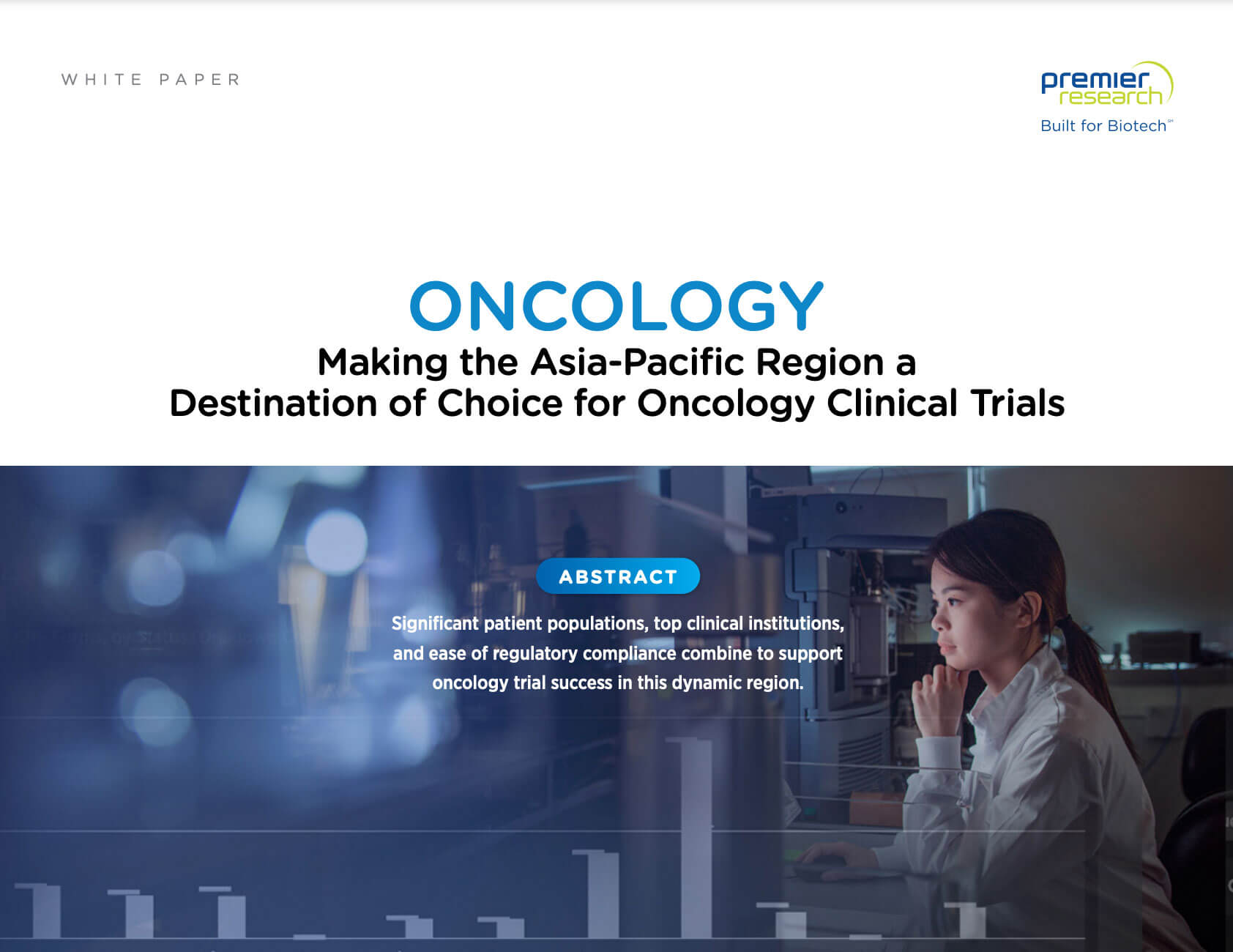Over the past decade, the Asia-Pacific (APAC) region has seen the most robust growth in oncology clinical trial activity, with a 138 percent increase over the period from 2010 to 2020. In fact, APAC now ranks first in the world for total number of ongoing oncology clinical trials, with China accounting for more than half of those studies. A number of factors are contributing to this flurry of activity, including relative ease of regulatory compliance, lower cost of study conduct, access to large patient populations, and presence of top clinical institutions and investigators.
In this white paper, we explore the growth of oncology clinical trials in APAC countries and discuss strategies to support global study success in this dynamic and complex region of the world.
Factors influencing the growth of APAC oncology clinical trials
A variety of factors are driving oncology clinical trial activity in the APAC region:
High patient population. The APAC region is densely populated and includes the two most populous countries – China and India. APAC accounts for 60 percent of the global population, with an urban population of over 2.3 billion people. Among this population are many treatment-naïve patients who may be eligible to enroll in clinical trials. Moreover, with globalization, there has been rapid growth in the middle class, a population segment that is often responsible for paying for their own healthcare and may be more open to participating in clinical trials for access to treatment.
Increase in skilled personnel. As clinical trial activity increases in the APAC region, the number of overseas returnees with drug development expertise and personnel with global study training and knowledge of International Conference on Harmonization good clinical practice (IHC-GCP) is growing. The APAC contract research organization (CRO) market, including both global and regional CROs, was valued at $8 billion in 2020 and is projected to exceed $18 billion by 2028.


